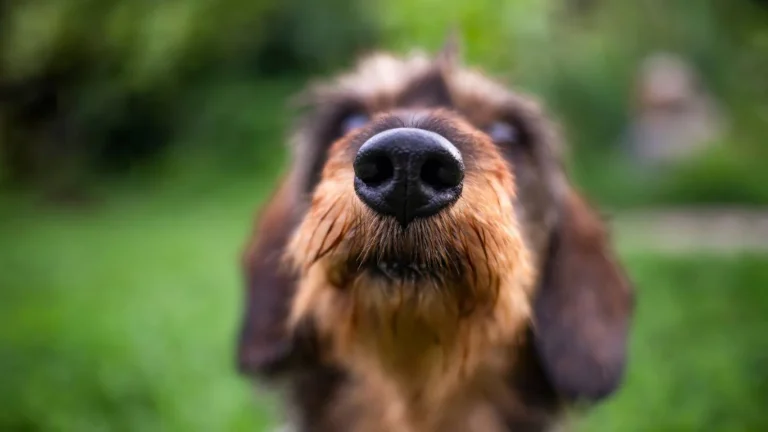Prevent Fleas & Ticks in Dogs Naturally: Powerful & Safe Methods
As a pet nutritionist and someone who’s spent years working in veterinary clinics, I’ve seen firsthand how frustrating and persistent ticks and fleas can be for dog owners. And I totally get it—no one wants to see their pup constantly scratching, biting, and feeling miserable. The good news? You don’t have to rely on harsh chemicals or prescription treatments to protect your furry friend. If you’re wondering how to prevent ticks and fleas in dogs naturally, you’ve come to the right place! With the right approach, you can keep these pesky parasites at bay using natural, safe, and effective methods.
Why Natural Flea & Tick Prevention Matters

I’ve had countless pet parents walk into the clinic, frustrated by the endless cycle of flea infestations and adverse reactions to chemical treatments. Many commercial flea and tick preventatives contain pesticides that, while effective, can lead to skin irritations, digestive issues, or even neurological side effects in sensitive dogs. That’s why I always encourage pet owners to explore natural alternatives that work with their dog’s body rather than against it.
Natural methods can be just as effective when used correctly and consistently. Plus, they help strengthen your dog’s immune system rather than exposing them to unnecessary toxins. Let’s dive into the best natural ways to keep fleas and ticks far away from your pup.
Boosting Your Dog’s Internal Defenses

One of the first things I tell dog parents? A healthy dog is naturally more resistant to pests. Fleas and ticks are attracted to weakened immune systems, so keeping your dog in top shape is one of the best preventive measures.
1. Add Natural Flea-Repelling Foods to Their Diet
There are certain foods that can naturally make your dog less appealing to fleas and ticks. I always recommend these simple dietary additions:
- Apple cider vinegar: A teaspoon in their water bowl balances pH levels, making their skin less attractive to parasites.
- Garlic (in tiny amounts): A small, dog-safe amount of fresh garlic can deter fleas, but always check with your vet first.
- Brewer’s yeast: A natural flea repellent packed with B vitamins that makes your dog’s scent unpleasant to pests.
- Omega-3-rich foods: Salmon, flaxseed, and fish oil keep the skin hydrated and less prone to irritation.
2. Hydration & Nutrient-Rich Meals
Fleas and ticks love to attack dogs with dry, flaky skin. Ensuring your pup gets plenty of hydration and a well-balanced diet filled with fresh, whole foods will make their skin naturally healthier and less appealing to pests.
Essential Oils: Nature’s Flea & Tick Repellent

Essential oils are one of my go-to solutions for naturally preventing fleas and ticks in dogs. But be careful—some oils can be toxic to pets if used improperly. Here are a few safe and effective options:
1. DIY Flea & Tick Spray
Mix up a simple, natural flea-repellent spray using essential oils:
- 1 cup of water
- 2 tablespoons of apple cider vinegar
- 5 drops of lavender oil (soothes skin & repels insects)
- 5 drops of cedarwood oil (kills flea larvae & repels ticks)
- 5 drops of lemongrass oil (natural insecticide)
Shake well and lightly mist your dog’s coat before heading outside. Avoid spraying near the eyes, nose, or open wounds.
2. Flea-Repellent Collar Infused with Essential Oils
If you don’t want to spray your pup every day, you can create a DIY flea-repellent collar. Simply add a few drops of diluted essential oils (like lavender, eucalyptus, or rosemary) onto a fabric collar or bandana. Reapply every few days for continuous protection.
3. Natural Flea Bath with Essential Oils
Regular baths help remove fleas and ticks before they become a big problem. Use a gentle, chemical-free dog shampoo and add a few drops of flea-repelling essential oils like peppermint, neem, or eucalyptus to keep pests away.
Maintaining a Flea-Free Home Environment
Even if your dog is well-protected, fleas and ticks can still sneak in through carpets, bedding, and furniture. Keeping your home clean and pest-free is just as important as treating your pup.
1. Regular Vacuuming & Cleaning
Fleas love to hide in soft fabrics, so be sure to vacuum your floors, furniture, and pet bedding at least once a week. Empty the vacuum immediately to prevent fleas from re-infesting your home.
2. Natural Flea-Repelling Sprays for the Home
I always recommend using a simple homemade flea spray for your home. Here’s a quick recipe:
- 1 cup of water
- 1 cup of white vinegar
- 5 drops of lemon essential oil
- 5 drops of cedarwood essential oil
Spritz lightly on carpets, pet bedding, and furniture to keep fleas away.
Stay tuned for more natural flea and tick prevention methods that will help keep your furry companion safe year-round!
Outdoor Prevention: Keeping Fleas and Ticks Out of Your Yard

Even if your dog is protected, your backyard can still be a ticking time bomb (pun intended) for flea and tick infestations. Trust me, I’ve seen so many cases where pet parents did everything right—sprays, essential oils, diet changes—but forgot about their outdoor space. Fleas and ticks love to hide in shady, moist areas, waiting for the perfect opportunity to jump onto your unsuspecting pup. The good news? With a few simple changes, you can turn your yard into a flea-free zone.
1. Keep Your Grass Short & Tidy
Long grass and overgrown shrubs provide the perfect hiding spots for fleas and ticks. Keeping your lawn well-trimmed makes it harder for them to thrive. I always recommend cutting your grass regularly and clearing out any dead leaves or debris where pests love to lurk.
2. Use Natural Yard Treatments
Instead of using chemical-laden pesticides, I prefer natural alternatives like diatomaceous earth (food grade only!). This fine powder is harmless to pets but dehydrates fleas and ticks on contact. Simply sprinkle it around your yard, focusing on shaded areas where these pests hide.
Other natural flea-repelling options include:
- Nematodes: These tiny, beneficial worms feed on flea larvae and can be sprinkled in your garden.
- Cedarwood chips: Fleas and ticks hate the scent of cedar, so adding cedar mulch to your landscaping helps keep them away.
- DIY garlic spray: A diluted garlic spray (safe for plants) acts as a natural flea deterrent.
3. Discourage Wildlife Visitors
Did you know that raccoons, opossums, and even stray cats can bring fleas and ticks into your yard? If your area is a hotspot for wildlife, consider securing your trash cans, removing outdoor pet food bowls, and using motion-activated lights to deter nighttime visitors.
Regular Grooming: Your First Line of Defense

One of the simplest (yet most overlooked) ways to prevent fleas and ticks naturally is through regular grooming. I can’t tell you how many times I’ve spotted fleas early on just by running a flea comb through a dog’s fur. It’s such an easy way to catch these pesky critters before they become a full-blown infestation.
1. Use a Flea Comb Daily
A flea comb is a game-changer. It’s a fine-toothed comb that traps fleas and their eggs as you brush through your dog’s coat. I always keep a small bowl of soapy water nearby—if I catch any fleas, they go straight into the water (fleas drown instantly in soapy water). Try this routine daily, especially during peak flea season.
2. Give Your Dog Regular Baths
Bathing your dog with a natural flea-repelling shampoo can work wonders. If you don’t want to buy one, you can make your own using:
- 1 cup of unscented castile soap
- 2 tablespoons of apple cider vinegar
- 5 drops of neem oil (amazing for repelling fleas and soothing itchy skin)
- 5 drops of lavender essential oil
This DIY flea bath will not only get rid of fleas but also keep your dog’s skin healthy and itch-free.
3. Check for Fleas & Ticks After Walks
Whenever you take your dog for a walk, especially in grassy or wooded areas, do a quick post-walk check. Pay close attention to areas like:
- Behind the ears
- Between the toes
- Under the belly
- Near the tail base
Ticks love to hide in these warm spots, and early detection is key.
Natural Home Remedies for Flea Infestations

If you’ve ever dealt with a flea infestation, you know how relentless these little pests can be. Fleas don’t just live on your dog—they lay eggs in your carpets, furniture, and bedding. If you suspect fleas have made their way inside, don’t panic. Here’s what you can do to get rid of them naturally.
1. Wash All Bedding & Fabrics
Start by washing everything—your dog’s bedding, blankets, and any fabric they regularly sleep on. Use hot water and add a splash of apple cider vinegar to the rinse cycle for extra flea-repelling power.
2. Use Baking Soda & Salt for Carpets
This is an old trick I swear by! Sprinkle a mixture of baking soda and salt onto your carpets and let it sit for at least 12 hours (overnight is best). This combo dehydrates flea eggs and larvae, stopping their life cycle. Vacuum everything up the next day, and don’t forget to empty your vacuum bag immediately.
3. DIY Flea Trap
One of my favorite hacks for catching fleas? A simple homemade flea trap:
- Fill a shallow dish with warm water and a few drops of dish soap.
- Place it near a lamp or nightlight (fleas are attracted to warmth).
- Leave it overnight—the fleas will jump in and get trapped!
Repeat for a few nights, and you’ll be amazed at how many fleas you catch.
Final Thoughts (But Not the End!)
Preventing fleas and ticks naturally takes a little effort, but trust me, it’s worth it. Your dog will be healthier, happier, and free from the nasty side effects of chemical treatments. By focusing on diet, grooming, home care, and yard maintenance, you’ll create a natural shield against these pesky parasites.
But we’re not done yet! There are even more natural flea and tick prevention strategies to explore. Stay tuned for more expert-backed tips to keep your pup safe year-round.
Herbal Remedies: Nature’s Secret Weapon Against Fleas & Ticks

Over the years, I’ve seen so many pet owners hesitate when it comes to herbal remedies. “Do they really work?” they ask. The answer? Yes—if you use the right ones! Herbal solutions have been used for centuries to repel pests, and when combined with other natural methods, they can be a powerful line of defense.
1. Rosemary Flea Rinse
If your dog is dealing with itchy skin or you want to add an extra layer of flea protection, try a rosemary rinse. It’s soothing, refreshing, and fleas hate the smell!
- Boil 2 cups of fresh rosemary leaves in a quart of water.
- Let it steep until the water cools, then strain out the leaves.
- After your dog’s bath, pour the rosemary water over their coat (don’t rinse it out!).
Bonus: Your pup will smell amazing!
2. Neem Oil: The All-Natural Pest Repellent
Neem oil is hands down one of my favorite natural flea and tick repellents. It’s antibacterial, antifungal, and works like a charm against pests.
How to use it:
- Mix a few drops of neem oil with coconut oil and massage it into your dog’s coat.
- Add a drop of neem oil to their shampoo for extra protection.
- Make a spray by diluting neem oil in water and spritzing it lightly on their fur.
One word of caution: Neem oil has a strong smell, so start with a small amount to see how your dog tolerates it.
3. Chamomile & Lavender Spray
If your pup has sensitive skin, this is a gentle and effective way to keep fleas away while soothing irritation.
- Brew a cup of chamomile tea and let it cool.
- Mix it with a few drops of lavender oil and pour it into a spray bottle.
- Lightly mist your dog’s coat and bedding for a calming, flea-repelling effect.
Traveling with Your Dog? Flea & Tick Protection on the Go

Flea and tick prevention isn’t just a home thing—your dog can pick up these pests anywhere! If you love taking your pup on adventures, here’s how to keep them safe while traveling.
1. Pack a Natural Flea & Tick Kit
Whenever I take my dog on a trip, I always bring a few essentials:
- Essential oil spray: A quick spritz before walks keeps fleas and ticks away.
- Flea comb: A must-have for checking their fur after hikes or park visits.
- Apple cider vinegar: A small bottle comes in handy for rinses or drinking water.
- Light-colored blanket: Fleas and ticks are easier to spot on light fabric, making it a great bedding option.
2. Avoid High-Risk Areas
Some places are hotspots for fleas and ticks. If you’re hiking or visiting a park, try to avoid:
- Dense, wooded areas with lots of brush.
- High grass where ticks love to hide.
- Areas where wild animals frequent (they often carry fleas!).
3. Do a Post-Adventure Check
After every trip, do a quick but thorough check on your dog. Run your fingers through their fur, inspect their paws, and don’t forget the ears and tail. Early detection means easy removal!
Common Myths About Natural Flea & Tick Prevention
There’s a lot of misinformation out there when it comes to natural flea and tick prevention. Let’s bust some of the most common myths:
Myth #1: Natural Remedies Don’t Work
I hear this one all the time, and it’s simply not true. Consistency is key. If you rely on one single method, you might not see the best results. But when you combine diet, grooming, essential oils, and home cleaning? Game-changer.
Myth #2: Garlic is Toxic to Dogs
Yes, large amounts of garlic can be dangerous, but small, controlled doses (like a tiny bit in their food) are completely safe and can help repel fleas naturally. Always check with your vet if you’re unsure!
Myth #3: Indoor Dogs Don’t Need Flea Prevention
Fleas can hitch a ride on your clothes, shoes, or other pets—even if your dog never goes outside much. Prevention is still important!
Final Thoughts: A Holistic Approach is Best
Preventing fleas and ticks naturally isn’t about using just one magic remedy—it’s about creating a lifestyle that makes your dog an unappealing host for pests. From diet to grooming to home care, a well-rounded approach is the best defense.
By making small, consistent changes, you’ll not only keep your pup flea-free but also improve their overall health and happiness. And trust me—nothing beats the peace of mind of knowing your dog is protected without relying on harsh chemicals.
References
- American Kennel Club – Guide to Flea & Tick Prevention
- American Holistic Veterinary Medical Association – Natural Approaches to Pet Health
- PetMD – Essential Oils and Flea Prevention
Disclaimer
This article is for informational purposes only and is not intended as medical advice. Always consult with a veterinarian before introducing new treatments or remedies for your pet.






